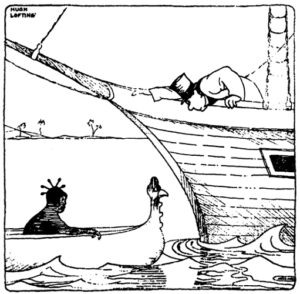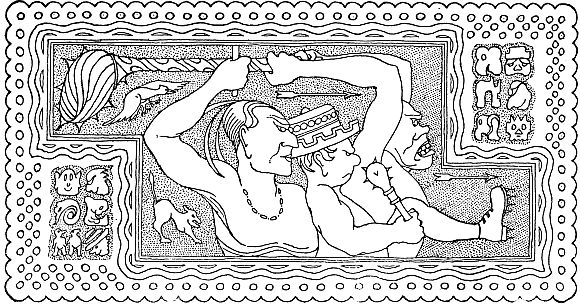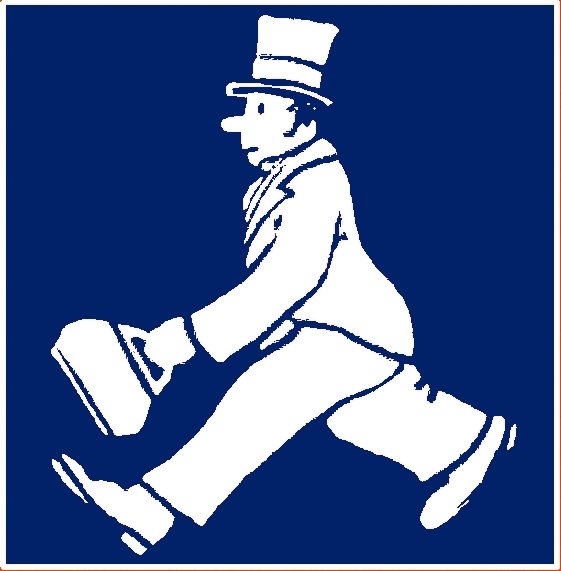The time of action of the Doctor Dolittle novels
The time of the action is the 19th century, when European countries experienced a rapid development of culture, industry, transport and armaments, and these countries carried out expansive activities of exploitation of Africa, America and Asia, whose inhabitants were considered less civilized. Therefore, they were used as slaves. Although in Doctor Dolittle Post Office it is mentioned that slave hunters and traders were considered pirates and their activities became illegal, it should be remembered that slaves were victims of European domination.
Naturally, Doctor Dolittle participates in freeing the slaves from the hunters, and treats all the locals with respect (Doctor Dolittle Post Office).

Themes of cultural differences in books about Doctor Dolittle
Black-skinned Africans, Red-skinned Indians
In Hugh Lofting’s books, Africans were called Black Men, and Indians from around South America – Redskins. However, this was due to the fact that in those years skin color was clearly associated with origin, because the relationship between skin color and origin from a given continent was 100%. That is, at that time in Europe there were practically only white people, in Africa there were black people, in America the native inhabitants were red-skinned Indians. So skin color was then a synonym for origin, so the words “African” and “Black Man” were used interchangeably, and Africans used the words “White Man” as a synonym for “Europeans”.
When searching the oldest book about Doctor Dollitle, The Story of Doctor Dolittle, for skin color context, you can also notice that in most cases the author uses more often names and functions (e.g. Queen Ermintrude) not pointing skin color where it is not important from the point of view of the plot of the novel.
The plot of Prince Bumpo, heir to the throne of the African kingdom of Jolliginka
In the section The Story of Doctor Dolittle there is the story of Prince Bumpo, the son of an African king. The prince was still a child and was reading the fairy tale about Sleeping Beauty. He went on a journey, found her and kissed her. She woke up, but she was scared of the Black Prince. That’s why he wanted to become white.
Note: This plot was replaced in most books printed after 1988 r.
This story is a story that describes the child’s ideas about cultural differences or shows cultural differences to children. However, the further adventures of Prince Bumpo level these differences when he moves to England, studies at Oxford, becomes a member of Doctor Dolittle’s crew and is very helpful, especially during their journey. Readers find that cultural differences vanish to some extent (though not completely – the Prince remains an African prince).
The theme of Black, Red and White fighting side by side
In The Voyages of Doctor Dolittle, there is a story about fighting alongside three friends – Doctor Dolittle, the African Prince Bumpo and the Indian, Long Arrow. This fight was commemorated with this poem:
THE SONG OF THE TERRIBLE THREE
Oh hear ye the Song of the Terrible Three
And the fight that they fought by the edge of the sea.
Down from the mountains, the rocks and the crags,
Swarming like wasps, came the Bag-jagderags.
Surrounding our village, our walls they broke down.
Oh, sad was the plight of our men and our town!
But Heaven determined our land to set free
And sent us the help of the Terrible Three.
One was a Black—he was dark as the night;
One was a Red-skin, a mountain of height;
But the chief was a White Man, round like a bee;
And all in a row stood the Terrible Three.
Shoulder to shoulder, they hammered and hit.
Like demons of fury they kicked and they bit.
Like a wall of destruction they stood in a row,
Flattening enemies, six at a blow.
Oh, strong was the Red-skin fierce was the Black.
Bag-jagderags trembled and tried to turn back.
But ’twas of the White Man they shouted, “Beware!
He throws men in handfuls, straight up in the air!”
Long shall they frighten bad children at night
With tales of the Red and the Black and the White.
And long shall we sing of the Terrible Three
And the fight that they fought by the edge of the sea.
As you can see, in this case, the distinction of skin colors was not intended to grade the importance of any of the characters, but was a natural element of the description of their adventures.

Controversy and censorship in books for children
These and other historical elements, although politically incorrect today, become the basis for changes to book content in new editions.
Should the topic of European domination in the 19th century be omitted in modern editions of old books? Shouldn’t skin color appear in new editions?
Or maybe it is the historical aspects that should teach a child about history. Well, no one will say that a child will consider the fact that there were slave hunters and traders to be a good thing.
There is a role here for parents, teachers or other people who read to the child. To teach them with your commentary what was not written (and it was not written 100 years ago, because then it was obvious to everyone).
A child should know history. Adults should remember it too. To avoid repeating it.
